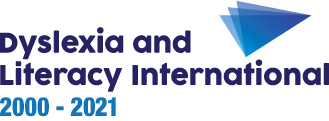The Hornsby list
Dr Bevé Hornsby, an eminent UK expert on dyslexia, drew up a list of early indicators of dyslexia :
- Pre-school
- family history of dyslexia, slowness in reading and poor spelling in other members of the family
- ambidextrousness, or writing with the left hand, or slowness in settling on one hand
- confusions between the left and right
- late walking and clumsiness
- inability to appreciate rhymes
- immature verbal ability and poor pronunciation
- difficulties in naming familiar objects
- Between 5 and 8
- inability to learn the alphabet, or the sounds that letters represent
- inability to put sounds together to make words
- inability to read except for a few simple words (‘sight’ words or words recognised by their global shape)
- inability to control a pencil to write or draw properly
- inability to appreciate rhymes
- Other signs, not confined to a specific age
- confusions between the left and right
- delay in learning to tell the time, and confusion in orientating in time and space
- difficulties in following several verbal instructions given quickly one after the other
Common mistakes in reading and spelling
These observations are inspired by the late Marianne Klees, a noted Belgian expert in dyslexia and an international consultant, and by Arlette Bourgueil, Belgian inspector of specialised schools. They have been adapted for English. Other particular behavioural types are drawn from Hornsby’s work.
• Auditory confusions, mostly between short vowels and between similar sounding consonants
bat ↔ pat
pot ↔ pat
The pronunciation of consonants is differentiated by:
- the manner of articulation (hard/soft, that is voiced/voiceless), and
- the place of articulation in the mouth
Confusion between consonants with the same manner of articulation:
| hard or voiceless | soft or voiced |
|---|---|
| [ p ] (pin) | [ b ] (bin) |
| [ t ] (ten) | [ d ] (den) |
| [ k ] (back) | [ g ] (bag) |
| [ f ] (fan) | [ v ] (van) |
| [ s ] (bus) | [ z ] (buzz) |
| [ sh ] (plush) | [ j ] (pleasure) |
| [ tch ] (church) | [ dj ] (judge) |
Confusion between consonants with the same place of articulation:
| Front of mouth | Middle of mouth | Back of mouth | ||||||||||
|---|---|---|---|---|---|---|---|---|---|---|---|---|
| [ p ] (pin) | [ t ] (tin, tame) | [ k ] (came) | ||||||||||
| [ b ] (ball) | [ d ] (doll, date) | [ g ] (gate) | ||||||||||
| [ f ] (fame) | [ th ] (theme, this) | [ th ] (think) | ||||||||||
| ||||||||||||
• Visual confusions between similar looking letters
b ↔ d
p ↔ q
n ↔ u
m ↔ n
f ↔ t
sh ↔ ch
here is an example of confusion between < b > and < d > (and omission of < r >) by Jordan, 7:

Inversions of letters, between letters, and less often between syllables or words
sign ↔ sing
was ↔ saw
on ↔ no
not ↔ ton
below is an example of all the possible inversions of letters for the word < teapot >:
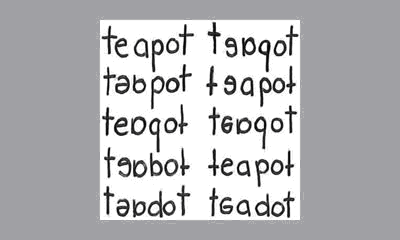
the sample below by Carlos, 7, shows inversions in the city he lives (< Lasne >) as well as in the words < four > and < friends >:

below is an inversion between < i > and < e > in the word < friend > by Alicia, 11:
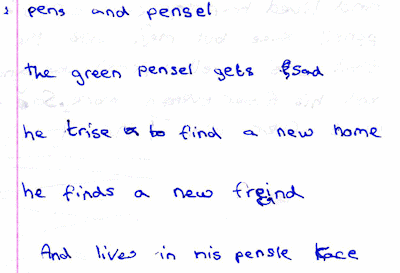
in the example below, Alex, 11, inverted letters in the word < great >:

in the next sample, Henri, 7, capitalized and reversed the letters < L > and < Z >:

the example below shows inversions in the words < was > and < bird >:

Addition of letters, syllables or prefixes/suffixes
pain → plain
sale → sayil
happy → unhappy
below is an example of omission of the letter < w > in the word < brown > by Pierre, 7, in a copying exercise:

in the next example the same word < jumps > is partially repeated by Alex, 7, when required to copy the sentence in cursive script:

• Omission of sounded letters, especially in unstressed syllables, or of prefixes/suffixes
pain ↔ pan
a banana ↔ a nana
hopeful ↔ hope
below is an example of the omission of the letter < w > in < brown > by Paul, 7:

in the examples below, Thomas, 12, omits letters in the words < should >, < executive >, < opportunity >, and whole syllables in the words < recognise >, < enthusiasm > and < difficult >, respectively:

in the example below, Andrea, 7, omits letters in the words < gymnastics >:

the next example is by Sophie, 10, who consistently omits the final letter of < twelve >:
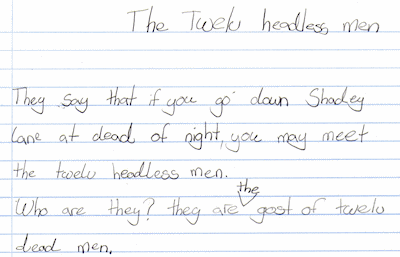
• Substitution of words
he saw a car → he saw a chair
• Mistakes that readers with dyslexia may continue to make at a later stage in recognizing or spelling complex sounds
[ oy ], [ ow ], [ air ], [ ear ], [ sh’n ]
information → informshan
• Other typical behaviours in reading
- inventing a story based on pictures in a book with no relation to the text
- slow and hesitant reading
- following the text with a finger
- constantly losing the thread – either omitting whole passages or re-reading the same passage twice
- reading aloud only with hesitation and sometimes, word by word, without changing the intonation
- trying to say the individual ‘sounds’ of words without being able to blend them to make the word
- reading words incorrectly when they are already familiar in the child’s spoken vocabulary and can be pronounced orally without difficulty
- reading exclusively in the present tense when the text is in the past
- guessing at words – whether or not they make sense
- ignoring punctuation
• Other typical patterns of mistakes in spelling
– contractions or fusing two words into one
< locked it > → < loctit >
– de-contractions, splitting a word up into two
< mystery > → < mis tery >
In the following essay, written by Tracy, 11, several words are de-contracted (< into >, < headmistress >, < suitcase >):
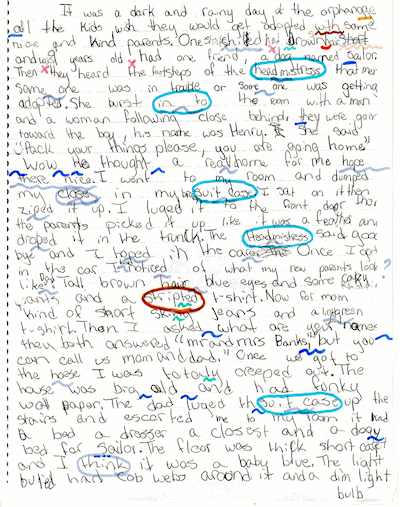
– problems in understanding words and their syntactical organization; contraction or de-contraction of words through not understanding their meaning or the grammatical role they play in a phrase, like Annie, 7, when she tries to name her three cats (< I have a cat who is called …>):
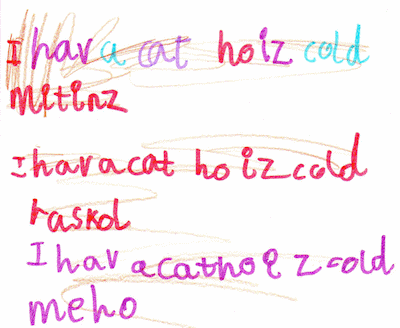
– inconsistent writing: the same word is spelt in different ways in the same paragraph or piece of writing, as in the case below for the word < teacher > written by Eliza, 7:

– writing words phonetically as they are pronounced
[ difficult ] → < difecelt >
[ gradual ] → < gradewal >
– mirror writing, e.g. in writing words from the last letter to the first one, as Sophie, 7, did for the words < tower > and < jellyfish > when drawing a mind map about her holidays in Corsica:
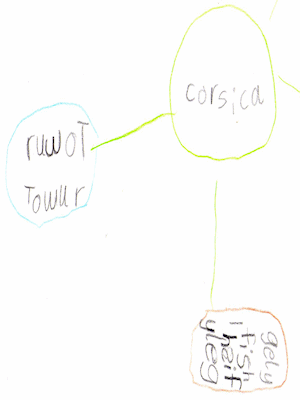
- using strange scripts – the words have little or no relation to the sounds they represent
- inability to write the appropriate ‘letter’ or grapheme (i.e. letter or group of letters) for the ‘sound’ or phoneme, even when the names of the letters corresponding to that sound are dictated
- inability to select letters out of a group on the basis of their name
- inability to match identical letters when asked
Illustration of some typical mistakes in writing

ACTIVITY 6
With your course partner, read carefully the letter of Zachary to Mr. Pumfrey (in the “Illustration” tab above), and try to find at least one mistake corresponding to the following categories:
- grammatical mistakes
- contractions
- de-contractions
- phonetic writings
- inconsistent writings of the same word
- reversals
- insertions
- omissions
- auditory confusions
Then compare your answers with our (non exhaustive) analysis of Zachary’s letter according to these categories.
I am ten. I did not injoy life until I got hellp because the techer say (thinking thay no evrything) “you are louse and nortey”.
Now I am haveinghellp
I can rit letters and storys and eneyfing I wont to. But speling is stil a lital bit difacelt.
I fink evre scool shod have a speshal techer tat thchis chrinin to try and get rid of their Broblem. When the techer told me to rit I wood sit thon and until it got difelcelt and sumthing allway cort my atenchon and I wood mes a round and get told off and I did not lisk life then.
I have riton a book and I have fotocopeed it for you. I am going to rit a nuther book and it is ablout two mice that go to the city and met ampcooth. [ a monster ]
Love
From
Zachary
Legend
Grammatical errors
Contractions – de-contractions
Phonetic writing
Inconsistent writing of the same word
Reversals
Insertions – omissions
Auditory confusions
You can also see Zachary’s difficulties with punctuation: omission of full stops at the end of sentences, confusions between commas and full stops, and no use of commas (e.g. no full stop after the third sentence).


